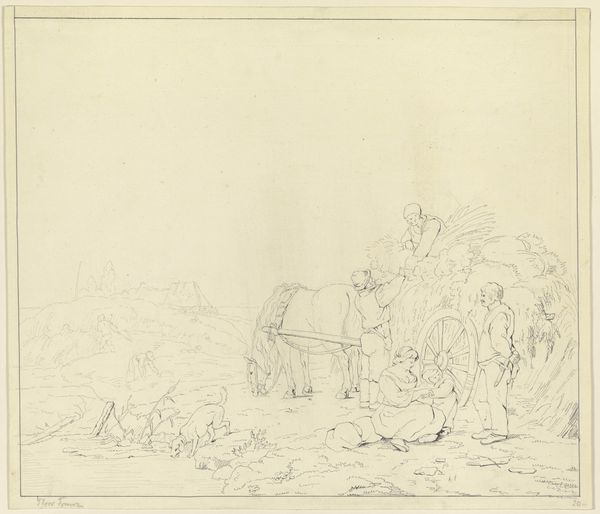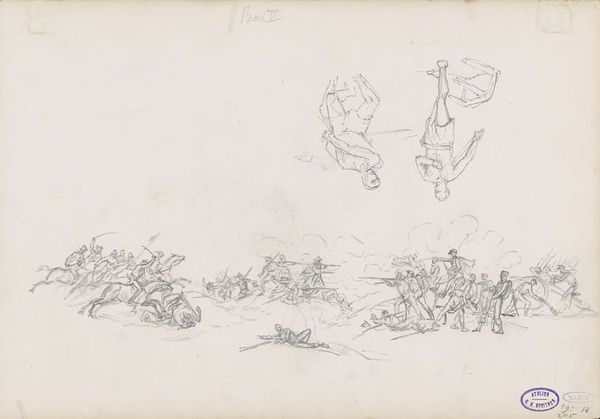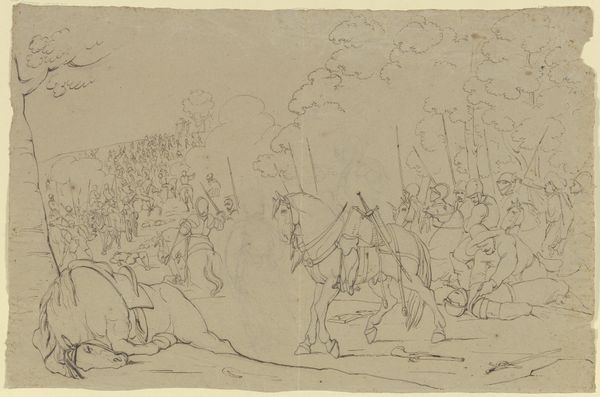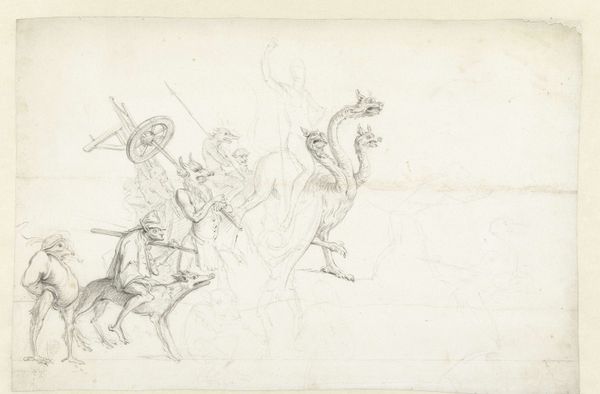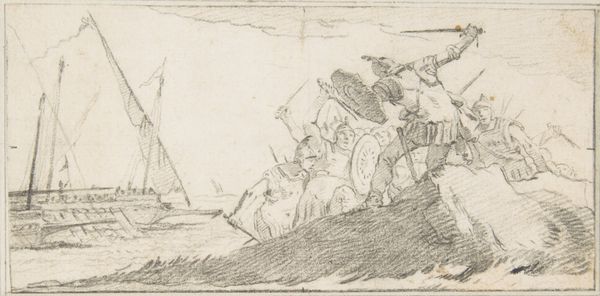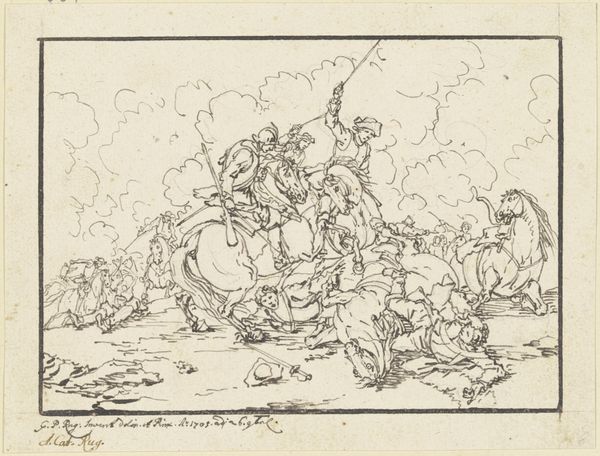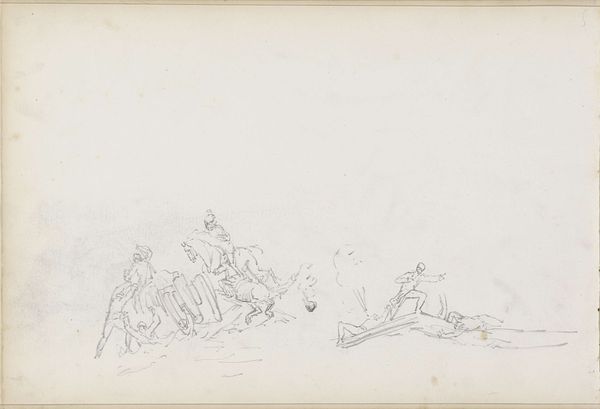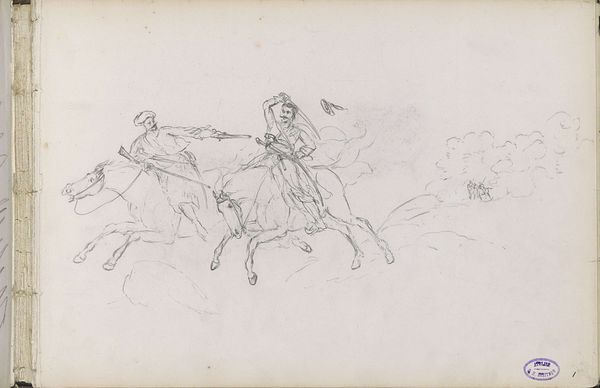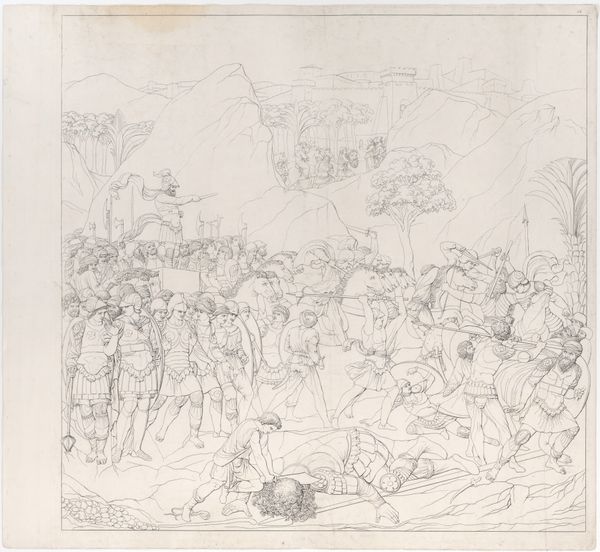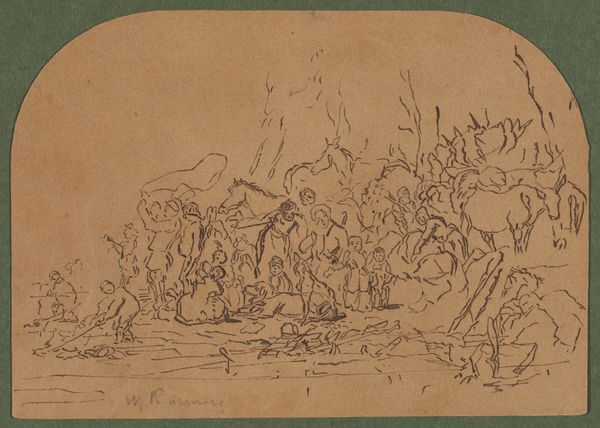
drawing, ink
#
drawing
#
narrative-art
#
figuration
#
ink
#
line
#
history-painting
Copyright: Public Domain
Editor: This ink drawing, "Wallenstein in the Battle of Lützen," is attributed to Franz Pforr. The monochromatic lines give it a very restless and chaotic feel, accurately conveying the intense moment of a battle. What do you see in this work? Curator: It speaks volumes through its symbols. Notice the central figure, Wallenstein himself. The raised sword is more than just a battle cry; it’s a symbolic gesture of power, dominance, and the will to impose order on chaos. Do you see the flags in the background, and consider what they might represent beyond just military identity? Editor: I do. They suggest allegiance, maybe national pride, but also division and conflict, since there can only be one flag per faction, of course. It looks like they might even be clashing, near the center. Curator: Precisely! Flags, swords, the very act of warring on horseback – these images resonate through history, echoing ancient battles and chivalric codes. The individual identities blur; what we remember are these overarching symbolic narratives. Pforr isn't just showing us a battle; he's inviting us to contemplate the timeless themes of war and leadership, honor and destruction. How does the medium itself—ink on paper—contribute to these ideas? Editor: Ink allows for those very fine lines. That contributes to both the chaos and the sense of refined historical record-keeping. The looseness evokes a quick battlefield sketch but is actually precisely done! Curator: Exactly! It is a compelling paradox, reflecting how history is both immediate and deliberately constructed. The drawing makes us reconsider the long life that certain iconographies and narratives have, persisting in our cultural memory. Editor: I hadn't considered how deliberately these symbols are used. Now, I can recognize them within this artwork but also appreciate their broader significance throughout visual culture.
Comments
No comments
Be the first to comment and join the conversation on the ultimate creative platform.
